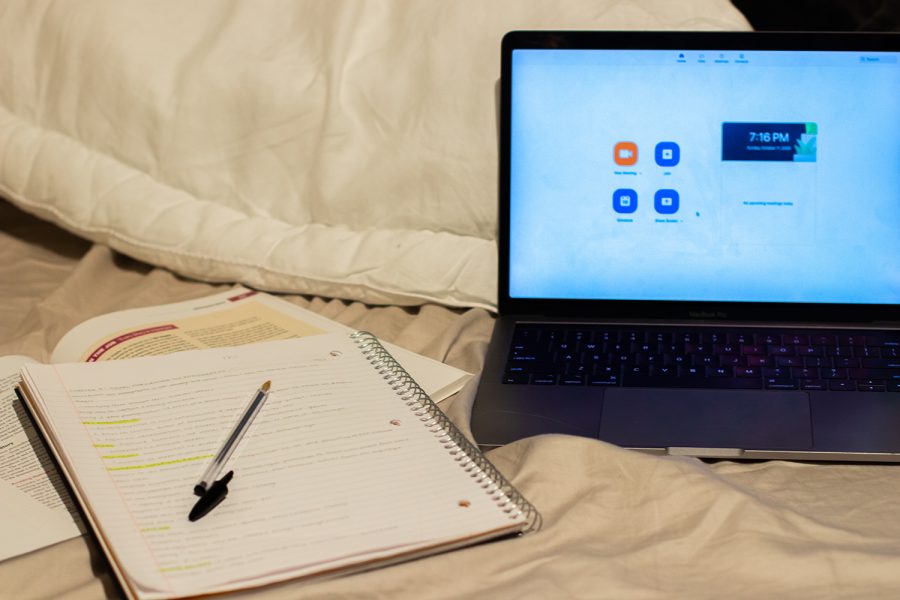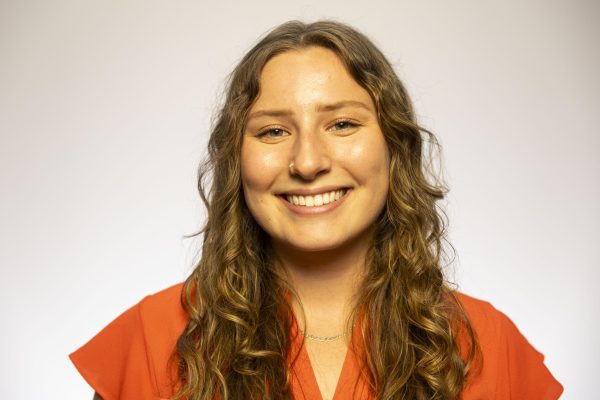University of Iowa eye experts say online classes lead to eye strain, lack of sleep for students
University health experts say that they have seen more patients with eye strain because of an increase of screen time as a result of COVID-19.
Photo Illustration.
October 20, 2020
University of Iowa freshman Darci Henkens cannot get to sleep.
With all online courses, Henkens said she’s on her computer six to seven hours each day. Even with the added precaution of blue light glasses, Henkens said she does not sleep as much as she used to.
“Now, I can’t go to sleep until like five or six in the morning,” she said. “The sun was rising before I went to sleep.”
UI Clinical Assistant Professor of Ophthalmology Khadija Shahid said she has recently seen more patients who work from home because of COVID-19.
“Students, as well as workers, have noticed more eye fatigue and eye strain from all of the increased screen time,” she said. “A lot of your downtime, since you can’t leave the house, is Netflix, so that is even more screen time.”
The most common problem Shahid said she sees in her patients is eye strain from screen time. She said some rare symptoms for eye strain can make one’s eyes feel gritty or hot so their ability to focus is low.
She added that in most cases, eye strain means the patient’s eyes and body feel tired.
“That could mean that they feel like their vision is blurry or they just feel fatigued, usually around the eyes,” she said. “Some of them may have frontal headaches and usually that’s in the frontal lobe, the front area above the eyes. A lot of patients are getting more dry eye symptoms from just staring at the computer, so that means their eyes are burning or irritated or red.”
For other patients, Shahid said, blue-light blocker eyeglasses have made a big difference.
RELATED: Earbud usage could cause issues for students
“It is more of a subjective thing. I have patients who swear by them and patients who haven’t seen much of a difference,” she said. “Getting enough sleep is super important. I know that sleep cycles have been skewed because of this quarantine.”
UI Clinical Professor of Ophthalmology Mark Wilkinson said some students may need an eye exam if eye strain is an ongoing problem.
“Certainly, getting an eye exam to make sure that you have the best prescription,” Wilkinson said. “If you’re having eye strain, it is good to make sure that you have healthy eyes and that there are no problems with that.”
Shahid said she often tells her patients who need more movement for their visual and general hygiene to do the “20-20-20 rule,” which breaks up the convergence of the eye and also focuses the eye to get back into a more natural posture.
The technique helps with memory retention and with processing information, she said.
“That means that after 20 minutes of screen time, the recommendation is to take 20 seconds to look at something that is 20 feet away or more,” she said. “I tell my patients to put a timer on their computer … Some students are kind of worried while studying and say, ‘Oh that will slow me down,’ but this was actually a technique by a medical student called the Pomodoro Technique.”
Sitting for long periods of time in front of a computer has created additional health problems for many people, including UI Director of the Writing Center Carol Severino. Severino said before COVID-19, she always graded her papers for her classes in a coffee house or public space.
Now, she said she’s having more back and neck pain than usual from being on her computer more frequently.
Although Severino experiences some pain from her online teaching, she said she is, “one of those people” who has to finish tasks and can’t be getting up all the time.
“It’s just that you are living your entire life online,” Severino said. “I mean, younger people can go out and see others, but you know, older people can’t as much. So, essentially, not only your academic and professional life, but your social life to a large extent is online.”





















